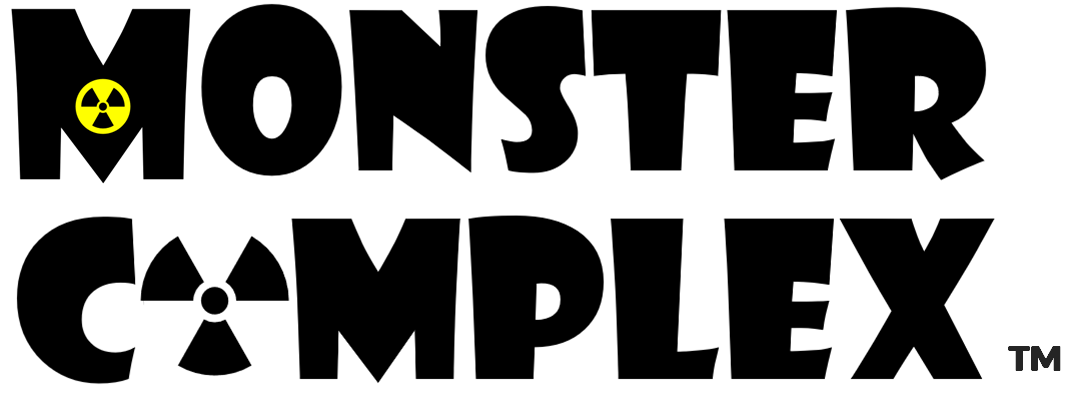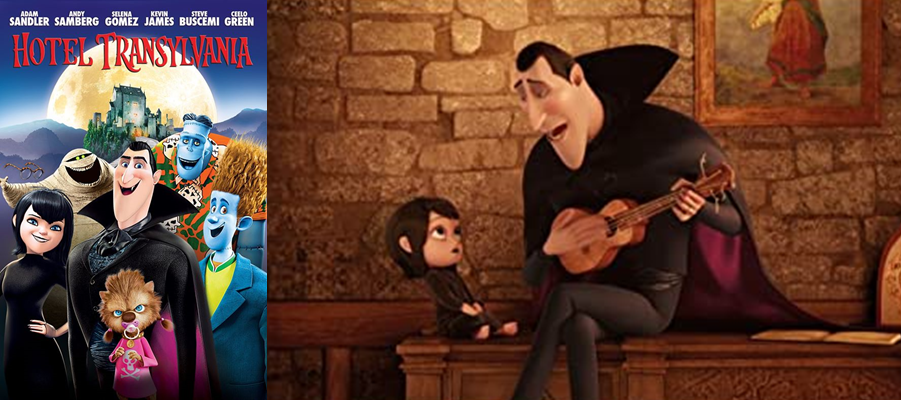FLASHBACK: Hotel Transylvania (2012)—rethinking Universal Monsters as a hilarious family comedy
A charming re-imagining of the Universal Monsters, Hotel Transylvania finds famed vampire Count Dracula as the owner of a monster’s-only hotel where they can take a stay clear of the humans that hate them. To celebrate the birthday of his teen daughter Mavis Dracula (who just turned 118), he invites his best monster friends over, including Frankenstein’s monster, a werewolf, a mummy, and the invisible man, among others.
When the hotel is unexpectedly visited by a lost human traveler, Dracula attempts to prevent Mavis from falling in love with him before the hotel's guests learn a human is in the hotel.
The start of a film series and spin-off TV show, HOTEL TRANSYLVANIA was the directorial debut of Genndy Tartakovsky, who’d made a name for himself as creator of animated television series Dexter’s Laboratory, Samurai Jack, and Star Wars: Clone Wars, and for his work on The Powerpuff Girls.
The voice cast includes Adam Sandler, Andy Samberg, Selena Gomez, Kevin James, Steve Buscemi, David Spade, CeeLo Green, Fran Drescher, Molly Shannon, Jon Lovitz, and Chris Parnell.
CLIP: Hotel Transylvania (2012) - Welcome to Hotel Transylvania! Scene
Available
NOTE: Monster Complex uses affiliate links
More about Dracula
The most famous vampire in literature, Dracula was introduced in Bram Stoker’s 1897 novel Dracula. Undead for hundreds of years, he keeps his own life by sucking blood from his victims. He can turn others into vampires, and is able to change his form to become such things as a bat, a wolf, a fog, or mist. His weaknesses include religious symbols. The character has appeared in many adaptations, riffs, and parodies in all kind of media. More than 200 films have been made that feature Count Dracula, a number that is reportedly only second to films featuring Sherlock Holmes. The most popular version of the character comes from his appearances in Universal Monsters films, starting with 1931’s Dracula starring Bela Lugosi.
Related links:
More about Frankenstein’s Monster
The creation of Victor Frankenstein, Frankenstein’s Monster—who, since he is considered to be Frankenstein’s son, means it’s OK to call him by the same name—was introduced in Mary Shelley’s 1818 novel Frankenstein; or, The Modern Prometheus. A new kind of person stitched together from the body parts of dead humans, Frankenstein’s monster has been featured in lots of media, including films, television, stage productions, video games, and everything else. The most popular version of the character comes from his appearances in Universal Monsters films, starting with 1931’s Frankenstein starring Boris Karloff.
Related links:
More about the Bride of Frankenstein
In Mary Shelley’s novel, Frankenstein’s Monster feels alone, so he asks Victor to make him a wife—promising that he and his mate will disappear into the wilderness. Victor, afraid for his own family, reluctantly begins work on her. However, worried that the Monster and his mate might have children (and even raise a new species which could destroy mankind), Victor destroys the unfinished bride. (The monster sees it happen—so things get even worse.)
This is only a fraction of the novel, but the 1935 movie Bride of Frankenstein expands on this part of the story. We actually see the woman be created. However, when she rejects the Monster, that story ends badly for some of these people, too.
Related links:
More about the Wolf Man
Inspired by folktales and legends, much of what we think about werewolves today came from the Universal Monsters. Their 1941 film The Wolf Man was written by Curt Siodmak, who introduced many elements of the legend. The film starred Lon Chaney Jr. as the man cursed to become a wolf when the moon was full. Although not Universal’s first werewolf film, this was the one that led to multiple sequels, as Chaney would replay his classic role four times.
Related links:
More about the Invisible Man
Classic science fiction novel The Invisible Man by H.G. Wells blends comedy and tragedy in its story of a scientist who discovers a way to make himself invisible. The Invisible Man, written by the same man behind the speculative classics The Time Machine and The Island of Doctor Moreau, helped establish Wells as the “father of science fiction.”
The novel stars the scientist Griffin, who has invented the ability to change his body’s reflection so that can’t reflect or absorb light. Unfortunately, once he makes himself invisible, he finds it impossible to reverse it. Over the course of the novel, the result drives him mad. Griffin’s inability to cure himself leads to a radical disconnection from society—and eventually from his own sanity.
The original novel The Invisible Man has been adapted, borrowed and referenced in lots of movies, TV shows, audio dramas, and comic books.
Related links:
More from Monster Complex
Monster Mash Parody: Frankenstein’s Monster vs Psychotic Killers
13 Adaptations of H.G. Wells novel The Invisible Man (well, lots more than that…)
Universal Classic Monsters: Debuts of Frankenstein, Dracula, The Mummy, and more
The Mummy: 13 TV versions from Buffy, Doctor Who, Jonny Quest, and more
Monster Mash: 13 Movies Where Frankenstein Meets Dracula Meets The Wolfman
27 Monster Musicals: From Addams Family and Spirited to Wicked and beyond
Halloween vs Christmas Town: Director Henry Selick wants credit
Related links
From Dracula to the Mummy, Why Do We Still Love Universal Monsters? (Collider)
Who Plays Dracula In Hotel Transylvania—& Why It Changed (Screen Rant)
Hotel Transylvania: Every Movie & TV Series in the Franchise, Ranked (MovieWeb)
How Hotel Transylvania’s Monsters Compare To Universal’s (Screen Rant)
We’re Ready for Funny Universal Monsters (Film School Rejects)
7 family-friendly films for Halloween (Deseret News)
Toy Story 4 Director Making Family-Friendly Universal Monsters Movie (ComicBook.com)
10 Halloween Movies To Watch If You Can't Watch Horror (CBR)
10 Best Non-Disney Halloween Movies that Disney Fanatics Should Check Out (Collider)
'Transylvania' Director Prefers His Monsters Funny (Entertainment Tonight)
Dying from laughter: The 25 most memorable horror comedies (Yardbarker.com)
13 Great Funny Movies About Vampires, Zombies, And Other Classic Monsters (MSN)
'Maury the Miserable Vampire' - Josh Ruben Writing Animated Monster Comedy (Bloody Disgusting)










Horror and comedy both make us jump—so these elements work so well together! Looking at books from authors like Terry Pratchett, Nana Kwame Adjei-Brenyah, Tanya Huff, and many more.